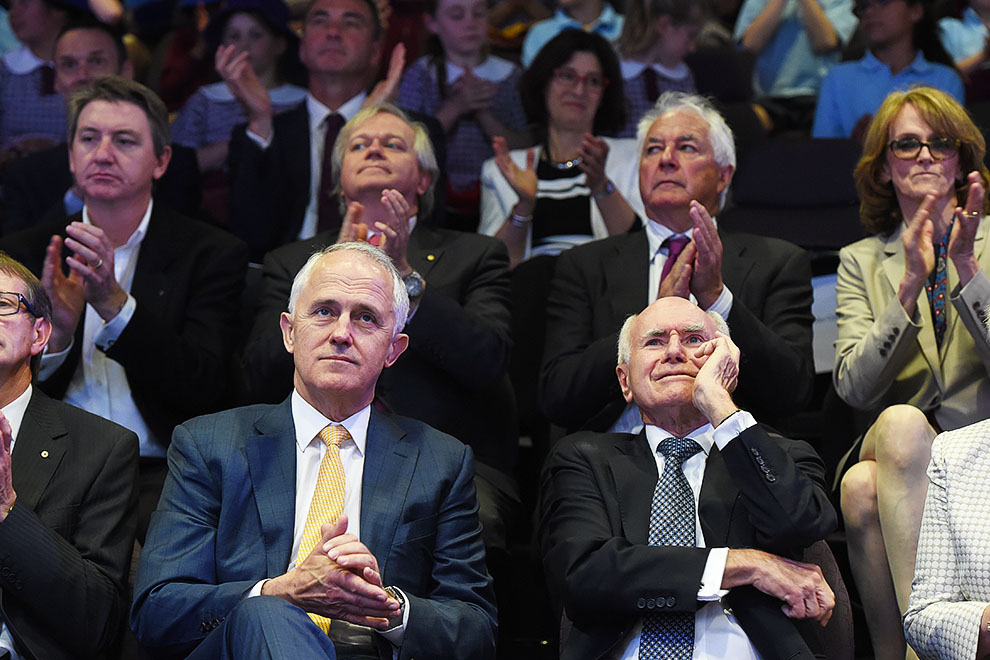Malcolm Turnbull enjoyed the most blissful start to his prime ministership. His government overtook the opposition in opinion polls; his rating as preferred prime minister soared; consumer confidence lifted. It seemed he could do no wrong. But at year’s end, Turnbull’s tranquil cruise hit turbulent seas, with one minister resigning over late night shenanigans in a Hong Kong bar and another standing down amid a police investigation into his role in undermining former speaker Peter Slipper. With Tony Abbott loyalists again calling for his reinstatement to cabinet to steady the ship, had the blissful political honeymoon come to an abrupt end?
Former British prime minister Harold Wilson famously observed that a week is a long time in politics, and indeed it is. In the scheme of things, though, events like those of the past week will inevitably pale.
You need only cast back to the early, chaotic days of John Howard’s government to see just how today’s crisis can be tomorrow’s footnote. No government in Australia’s history has been so wracked by resignations and sackings as that of the first Howard term, 1996–98. Yet Howard himself was undamaged, his ship sailed on and the electorate returned him three more times (though by a close shave in 1998).
At the time it looked bad, very bad. In quick succession, Jim Short and Brian Gibson quit the front bench over shareholdings in companies that fell within their portfolio responsibilities; Bob Woods resigned over questionable expenses claims; Geoff Prosser left after revelations that he was a commercial property landlord while having responsibility for commercial tenancy provisions of the Trade Practices Act; and National Party ministers John Sharp and Peter McGauran, along with Liberal David Jull, resigned over irregularities in their use of ministerial travel allowances – the so-called “travel rorts” affair.
It looked for all the world like a government out of control and a prime minister singularly incapable of managing an unruly team. The issues were magnified by the fact that Howard had campaigned in 1996 on a policy of “clean government” and introduced a code of ministerial conduct requiring ministers to divest shares in companies that fell within their portfolios and to be truthful in parliament.
Two other ministers, John Moore and Warwick Parer, managed to survive allegations of conflict of interest, each related to shareholdings. While a prima facie breach of the code looked to be the case, the fact that each came from Queensland, where Howard needed support in the wake of the rise of One Nation and the backlash against his gun control laws, probably saved their jobs. It opened Howard to the charge of double standards, though – especially in the case of Parer, a close friend.
As the resignations mounted, the government was feeling the pain. Around this time, I found myself talking to a senior minister at a social event, and I ventured the opinion that this was the worst government Australia had yet seen. The minister looked at me for a moment, then replied: “You won’t get an argument from me on that.” I duly reported the remark in the Canberra Times, prompting a cheeky response in parliament from Labor MP Simon Crean, offering odds on its likely source. (He did not even get close.)
It was surprising just how quickly the storm passed. Despite the government’s seeming disarray, Howard chanced his arm with an early election in 1998, took the contentious plan for a GST to the people, and managed to scrape home, although his majority of forty-five was slashed to just twelve. Then, in early 1999, the government quietly announced that ministers would no longer be required to divest themselves of shareholdings.
Malcolm Turnbull will inevitably come in for criticism over the resignation of Jamie Briggs and the standing down of Mal Brough, but whether it will inflict any lasting damage is doubtful. Briggs, an Abbott ally, was probably lucky to retain his place on the front bench after the leadership change; Brough was appointed, controversially, with a cloud already hanging over him, which poses a question about prime ministerial judgement. But, like Howard before him, Turnbull needed to shore up his Queensland support, and his decision to appoint Brough (and retain the plodding Peter Dutton) was directed to this end.
A further question remains about the prime minister’s initial defence of Brough over the apparent contradictions in his role in the sordid Slipper affair, which dominated question time in the last sitting week of parliament. Turnbull doesn’t need to be reminded of the damage Tony Abbott brought on himself by obstinately defending Bronwyn Bishop’s use of her travel entitlements.
In the short term, the problem of ministerial replacements will create a headache or two, with the Nationals still agitating for an extra ministry and a clamour of sorts emerging from the tiny Abbott “cave” for the former prime minister to be recalled to cabinet – both of which Turnbull looks set to reject. But with an election due in 2016 and a lot of budget repair needed, the storm may well be eclipsed by more substantial issues, as was the case for Howard. •




